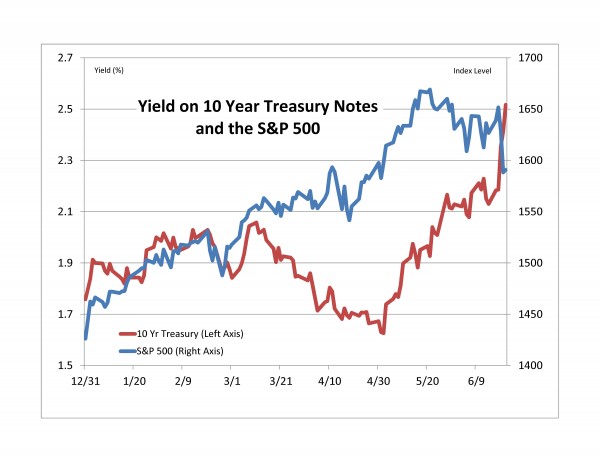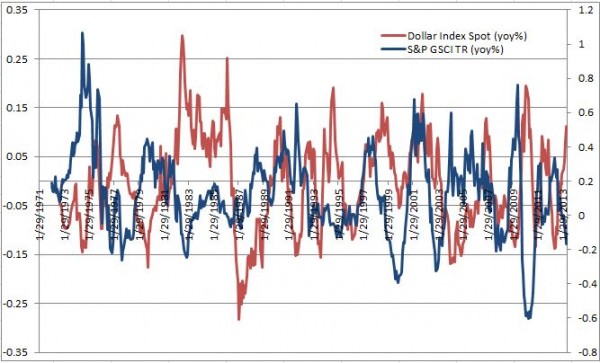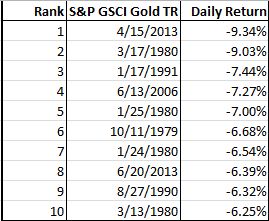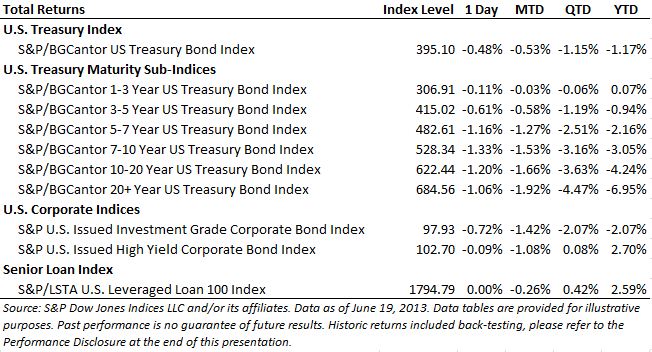Investors are rightly concerned about the future course of equity prices, especially in the context of the Federal Reserve’s bruited tapering of QE3, and it’s obviously true that equity market volatility has increased sharply since the beginning of May. Rising volatility typically means lower stock prices — the correlation of the S&P 500 and the S&P 500 VIX Short-Term Futures Index is -0.78. If volatility continues to rise, what can equity investors do to diminish its impact?
An increasingly popular solution in recent years has been to use a variety of low volatility strategies as an alternative to traditional cap-weighted indices. Low vol indices are designed to attenuate the movements of their parent index, in both directions — they typically go up less when times are good, and go down less when times are bad. But although they may go down less when times are bad, they still go down. For the month of June (through the close on Friday 6/21), the total return of the S&P 500 was -2.23%, versus -1.38% for the S&P 500 Low Volatility Index. Low Vol did what it typically does in bad markets by diminishing the parent index’s decline.*
There’s another approach to dealing with increasingly volatile equity markets. That approach is to own a long position in VIX futures — in other words, to regard volatility as a diversifying asset for the investor’s equity portfolio. In this sense, volatility is analogous to an insurance policy. The problem is that when you don’t need it, volatility can be very expensive insurance. For the year ended 6/21/13, e.g., the S&P 500 VIX Short-Term Futures Index declined by -69% (while the S&P 500 rose by +23%).* Holding a permanent or static portfolio weight in volatility is likely to be an expensive exercise.
The S&P 500 Dynamic VEQTOR Index attempts to cheapen the implicit insurance cost of owning volatility by altering its relative exposure to VIX and the underlying S&P 500. (Hence the name: VEQTOR = Volatility and EQuity allocaTOR.) When it appears propitious to increase exposure to volatility (for example, when it’s in an uptrend), VEQTOR holds more. At other times, VEQTOR’s vol exposures can be quite modest. The combination of two negatively-correlated asset (equity and equity volatility) can produce a smoother, hedged pattern of returns, especially in comparison to a fully-invested equity index. For example, for the month of June (through the close on Friday 6/21), the total return of the S&P 500 Dynamic VEQTOR Index was +0.24%, compared to the S&P 500’s -2.23% decline.*
Volatility is uncomfortable for all equity investors. But it’s also unavoidable. Those who seek to lessen its effects can try to own it (with VEQTOR) or reduce it (with Low Vol). Both choices have their risks, and both have their potential rewards.
* Examples are provided for illustrative purposes only. Past performance is no guarantee of future results.
The posts on this blog are opinions, not advice. Please read our Disclaimers.















































